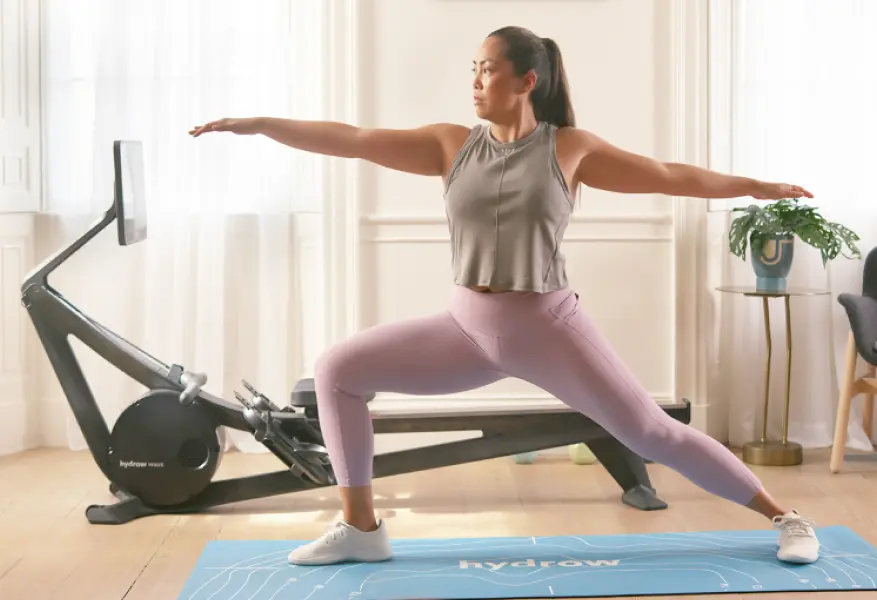Did you know that just 15 minutes of daily exercise can boost your mood and increase endorphin levels1? Whether you’re looking to enhance your heart health, build muscle strength, or simply feel better in your body, a structured 30-day plan can make all the difference. Drawing from trusted sources like the National Institute on Aging and Mayo Clinic, this guide offers practical steps to transform your routine.
Regular workouts, combined with balanced nutrition, can reduce disease risks and improve your overall well-being2. Studies show that setting measurable goals, like mastering a yoga pose or increasing daily steps, can boost motivation by up to 80%1. Consistency is key—even short sessions can lead to significant improvements over time.
This article provides a clear roadmap to help you achieve your goals. From aerobic exercises to strength training, you’ll learn how to create a balanced routine that works for you. Track your progress, monitor key indicators, and watch as your body transforms in just 30 days.
Key Takeaways
- Daily exercise, even in short sessions, can significantly improve mood and energy levels.
- Setting measurable goals increases motivation and adherence to fitness routines.
- A mix of aerobic, strength, and balance exercises promotes overall physical ability.
- Consistency is crucial for long-term health and fitness success.
- Tracking progress helps you stay on course and achieve your goals faster.
Define Your Health and Fitness Objectives
Starting your fitness journey begins with clear, actionable goals. Without a roadmap, it’s easy to lose focus or feel overwhelmed. Setting specific objectives helps you stay on track and measure your progress effectively.
Set Realistic 30-Day Goals
When defining your goals, consider your current exercise level and body condition. For example, aim to complete 150 minutes of moderate aerobic activity weekly, as recommended by the U.S. Department of Health and Human Services3. If you’re new to strength training, start with two sessions per week targeting major muscle groups3.
SMART goals—specific, measurable, achievable, relevant, and time-bound—are proven to increase motivation and adherence4. For instance, set a goal like, “Walk 30 minutes daily for the next month.” This approach ensures you stay consistent and see measurable improvements.
Crush your goals one day at a time! 🚀 Stay focused, track progress, and celebrate every win with this Goal Setting & Planning Daily Planner! 🎯📖 #StayMotivated #GoalGetter
Track Your Progress and Achievements
Tracking your progress is essential for staying motivated. Use a journal or app to record workout frequency, intensity, and milestones. For example, note how many minutes you spend on cardio or the weights you lift during strength training.
Regular check-ins with your doctor or fitness trainer can provide personalized guidance. They can help adjust your plan based on your body’s response and ensure you’re meeting your objectives safely.
Balance is key. Incorporate both cardio and strength training to achieve overall fitness. Studies show that a mix of aerobic exercise and muscle-building workouts reduces disease risk and improves heart health5.
Essential Health and Fitness Strategies
Unlock the potential of your body with smart exercise strategies. Regular physical activity offers a wide range of benefits, from boosting your heart health to enhancing mental clarity. By understanding the science behind movement, you can create a routine that minimizes risks while maximizing results.
Understanding the Benefits of Physical Activity
Exercise is more than just a way to stay in shape. It improves endurance, strengthens muscles, and sharpens your mind. Studies show that even 150 minutes of moderate aerobic activity weekly can significantly reduce disease risks6. Activities like walking, swimming, or cycling elevate your heart rate, promoting cardiovascular health7.
Muscle-strengthening workouts, such as lifting weights or doing bodyweight exercises, enhance stability and reduce fall risks6. Combining different types of exercise, like yoga or dancing, ensures a well-rounded approach to fitness6.
Stretch, tone, and strengthen anytime, anywhere! 💪🔥 This Elastic Resistance Band is perfect for full-body workouts—abs, arms, legs & more! 🏋️♀️💖 Ideal for beginners in fitness, yoga & Pilates! Grab yours now! 🎯 #StayFit #HomeWorkout #StrengthTraining
Reducing Health Risks with a Smart Routine
A smart routine balances intensity and recovery. For example, performing strength training two days a week helps build muscle without overworking your body6. Avoid working the same muscle group on consecutive days to allow for proper recovery6.
Understanding exercise intensity is key. Moderate activities like brisk walking or gardening can elevate your heart rate without causing discomfort6. Gradually increasing weight, sets, or repetitions ensures steady progress6.
As the Mayo Clinic notes, “Even minimal exercise each week can lead to significant improvements in your overall well-being.”
By adopting a balanced approach, you can minimize risks while reaping the full benefits of physical activity.
Building a Balanced Exercise Routine
A well-rounded exercise plan is the foundation of a strong, resilient body. By combining aerobic, strength, and flexibility workouts, you can achieve long-term physical success. This approach not only boosts endurance but also enhances muscle growth and joint stability8.

Row your way to peak fitness! 🚣♂️🔥 The Hydrow Machine brings the ultimate full-body workout—smooth, immersive, and powerful.
Aerobic Exercise for Endurance and Heart Health
Aerobic activities like walking, cycling, or swimming elevate your heart rate and improve lung function. The CDC recommends at least 150 minutes of moderate aerobic activity weekly for optimal heart health8. High-intensity interval training (HIIT) can also provide efficient cardio workouts in less time9.
Regular aerobic exercise reduces disease risks and builds endurance. Aim for activities that keep you moving and elevate your heart rate without causing discomfort8.
Strength and Resistance Training for Muscle Growth
Strength training is essential for building muscle mass and enhancing bone density. The Department of Health and Human Services suggests targeting all major muscle groups at least twice a week9. Use resistance bands, weights, or bodyweight exercises like squats to challenge your muscles.
This type of workout also increases your metabolic rate, aiding in weight management8. Gradually increase intensity to avoid injury and ensure steady progress.
Incorporating Balance and Flexibility Workouts
Flexibility exercises, such as yoga or stretching, improve joint stability and reduce injury risks. Stretching should be held for at least 30 seconds to be effective9. Daily practice can alleviate muscle tension and enhance posture8.
Balance exercises are particularly important for older adults, as they help prevent falls and fractures9. Incorporate activities like tai chi or single-leg stands to maintain stability.
“A balanced routine ensures your body stays challenged and progressing, minimizing risks while maximizing results.”
Incorporate Nutritional and Lifestyle Changes
Fuel your body with the power of superfoods! 💚✨ Organifi Green Juice makes healthy living easy—detox, energize, and glow from the inside out! 🌱🥤 Grab yours today! #HealthyLiving #GreenJuice #SuperfoodPower
Small changes in your diet and lifestyle can have a big impact on your well-being. Proper nutrition and rest are essential for achieving your physical goals. By making smarter choices, you can enhance your overall performance and reduce the risk of chronic disease10.
Fueling Your Body with Healthy Foods
Healthy foods fuel your workouts and aid muscle recovery. Aim for a balanced intake of vegetables, fruits, lean proteins, and whole grains11. Post-exercise, focus on protein and carbohydrates to minimize inflammation and support regeneration10.
Swapping processed snacks for nutrient-rich options, like Greek yogurt or seasonal fruits, can save calories and add essential nutrients12. These choices not only improve your diet but also enhance your body’s ability to recover and perform.
Enhancing Recovery with Quality Sleep and Stress Management
Quality sleep is crucial for recovery and sustained energy. Adults should aim for 7-9 hours nightly to optimize their physical and mental well-being12. Lack of sleep can lead to fatigue and cravings, derailing your progress.
Effective stress management also plays a key role. Techniques like mindfulness or yoga can lower stress levels, improving your overall life quality10. Combined with proper nutrition, these habits create a foundation for long-term success.
“Balancing food intake with activity levels is key to sustained energy and improved performance.”
By making consistent changes, you can manage weight effectively and reap long-term benefits. Start small, plan your week ahead, and watch as your body transforms11.
Stay Motivated and Monitor Your Progress
Keeping track of your exercise routine can transform your results. Monitoring your efforts helps you see improvements, stay motivated, and avoid plateaus. By using tools like fitness apps, journals, or wearable devices, you can make data-driven adjustments to your routine13.
Ready to transform your fitness journey? Let’s row! Get Yours Today
Tracking Your Workouts for Continuous Improvement
Logging your exercise duration, intensity, and frequency is essential. Studies show that people who track their progress are 25% more consistent with their workouts13. Wearable devices can record metrics like heart rate and calorie burn, giving you a clear picture of your performance.
Consistent tracking helps identify areas for improvement. For example, if your cardio sessions aren’t elevating your heart rate enough, you can adjust the intensity14. Small changes based on data can prevent injuries and boost your overall ability15.
Adjusting Your Routine for Optimal Results
Interpreting your progress data allows you to refine your routine. If you’re not seeing gains in muscle mass, consider increasing weights or adding squats to your plan14. Adjusting your workout every 4-6 weeks can maintain a 20% increase in effectiveness13.
Celebrating small wins, like completing a 30-minute yoga session or improving your stair-climbing time, keeps you motivated13. Regular check-ins with a doctor or trainer ensure you’re on the right path and lower the risk of overtraining14.
“Tracking your progress not only keeps you accountable but also helps you celebrate every step forward.”
Conclusion
Taking control of your physical well-being starts with actionable steps and a clear plan. Combining exercise, proper nutrition, and lifestyle changes creates a foundation for lasting results. Balanced workouts, like yoga or resistance training, build muscle, protect your heart, and enhance joint stability16.
Tracking your progress ensures continuous improvement. Studies show that monitoring activity levels increases consistency by 25%17. Whether you’re climbing stairs or using resistance bands, every effort contributes to your overall ability.
Start today by implementing these strategies. A consistent, well-rounded approach is the key to achieving your goals. Your journey to a stronger, more vibrant you begins now.
FAQ
How can I set realistic 30-day goals for improving my well-being?
What are the benefits of including aerobic exercise in my routine?
Why is strength training important for muscle growth?
How can I incorporate balance and flexibility workouts into my plan?
What role does nutrition play in achieving my fitness goals?
How can I stay motivated to track my progress?
What adjustments should I make if my routine isn’t working?
Source Links
- ‘I worked out 30 days straight to reset my relationship with exercise’ – https://www.cosmopolitan.com/uk/body/fitness-workouts/a42277254/30-day-workout-plan/
- 5 steps to start a fitness program – https://www.mayoclinic.org/healthy-lifestyle/fitness/in-depth/fitness/art-20048269
- 7 great reasons why exercise matters – https://www.mayoclinic.org/healthy-lifestyle/fitness/in-depth/exercise/art-20048389
- How to Define SMART Fitness Goals and Stick to Achievable Routines – Crunch – https://www.crunch.com/thehub/how-to-define-smart-fitness-goals-and-stick-to-achievable-routines/
- Fitness and Exercise: Workouts, Nutrition, and More – https://www.healthline.com/health/fitness-exercise
- Three Types of Exercise Can Improve Your Health and Physical Ability – https://www.nia.nih.gov/health/exercise-and-physical-activity/three-types-exercise-can-improve-your-health-and-physical
- What Are the 5 Health-Related Components of Physical Fitness? – https://www.healthline.com/health/fitness/health-related-components-of-fitness
- Building a Balanced Workout Routine | Alliance Orthopedics – https://allianceortho.com/building-a-balanced-workout-routine-strength-cardio-and-flexibility/
- 5 basics of a well-rounded fitness routine – https://www.mayoclinic.org/healthy-lifestyle/fitness/in-depth/fitness-training/art-20044792
- Integrated Role of Nutrition and Physical Activity for Lifelong Health – https://pmc.ncbi.nlm.nih.gov/articles/PMC6682932/
- Keep Active & Eat Healthy to Improve Well-being & Feel Great – NIDDK – https://www.niddk.nih.gov/health-information/weight-management/keep-active-eat-healthy-feel-great
- 10 Ways to Make Lifestyle Changes Easy – Center for Healthy Eating and Activity Research – https://chear.ucsd.edu/blog/10-ways-to-make-lifestyle-changes-easy
- How to Stay Motivated and Track Your Fitness Progress – Fitness CF Mount Dora FL Gym – https://fitnesscfgyms.com/mountdorafl/blog/fitness-tips/how-to-stay-motivated-and-track-your-fitness-progress/
- Tracking Your Progress To Stay Motivated — Dr Sharon Gam – https://www.drsharongam.com/articles/tracking-your-progress-to-stay-motivated
- Monitor Your Progress to Stay Motivated – https://medium.com/runners-life/monitor-your-progress-to-stay-motivated-ac3501c56247
- Physical Activity for Health and Fitness: Past, Present and Future – https://pmc.ncbi.nlm.nih.gov/articles/PMC8918377/
- Benefits of Exercise: MedlinePlus – https://medlineplus.gov/benefitsofexercise.html






